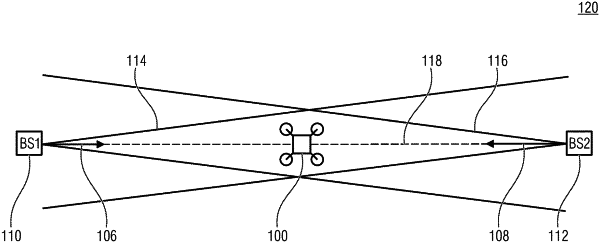| CPC G05D 1/101 (2013.01) [B64C 39/024 (2013.01); G01S 5/0218 (2020.05); G01S 5/0273 (2013.01); G01S 19/14 (2013.01); B64U 2201/20 (2023.01)] | 24 Claims |

|
1. An unmanned aerial vehicle, comprising:
a receiver configured to receive two periodic wideband signals transmitted from two spaced apart base stations of a navigation system for unmanned aerial vehicles, wherein the two periodic wideband signals are time-synchronized; and
a position determiner configured to determine a position of the unmanned aerial vehicle relative to the two base stations based on a difference between reception times of the two periodic wideband signals and based on reception intensities of the two periodic wideband signals,
wherein the unmanned aerial vehicle is configured to fly along a flight path that is defined by beams, wherein the beams are used by the two spaced apart base stations for transmitting the two periodic wideband signals, wherein the beams face and overlap each other,
wherein the flight path extends along main beam directions of the beams that are generated by the two spaced apart base stations using directional antennas.
|